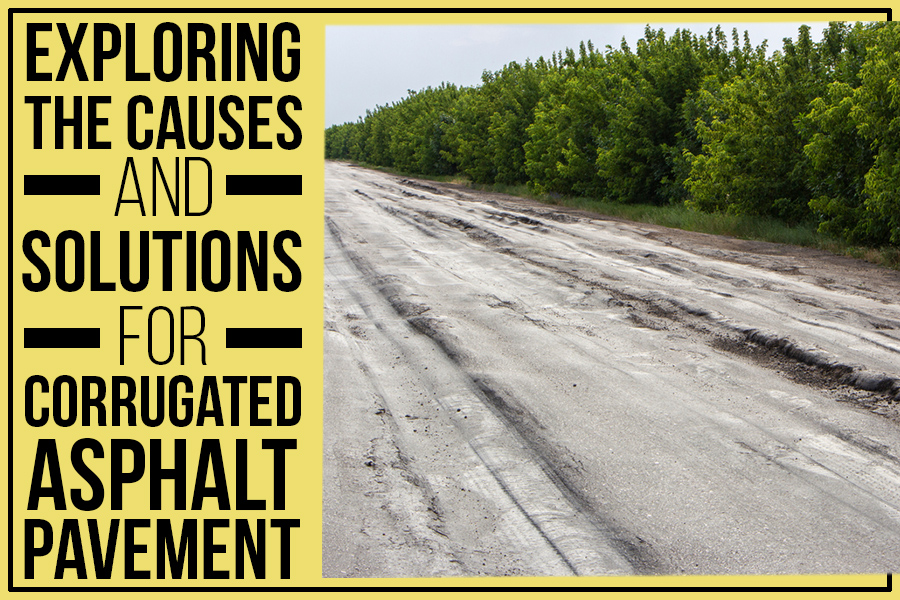Key Takeaways
- Corrugated pavement is visually unappealing and can be dangerous for driving.
- Weak subgrade, poor mixing, improper rolling, temperature changes, and soft bottom layers are common causes of corrugated asphalt pavement.
- Solutions to corrugated pavement include proper rolling and compaction, using modified binders, increasing asphalt thickness, and repaving the surface.
- Regular inspections, proper drainage, and prompt crack filling can prevent asphalt corrugation.
- Hiring a professional asphalt contractor can prevent corrugations by ensuring proper installation and repair.
Asphalt driveways and parking lots are essential to any property, providing a smooth and durable surface for vehicles to travel. In fact, according to a report by the National Asphalt Pavement Association, over 2.6 million miles of paved roads in the United States are surfaced with asphalt.
However, despite its durability, asphalt pavement can still suffer from various issues, including corrugation. Corrugated asphalt pavement is characterized by waves or ripples that can make driving uncomfortable and even dangerous. Purcell’s Paving and Masonry will explore the causes of corrugated pavement and provide tips and solutions for fixing and preventing this common problem.
What is Corrugated Asphalt?
Asphalt, although durable, isn’t perfect. Corrugated asphalt is a common issue that affects roads. It can be characterized by waves or ripples perpendicular to the traffic flow. Not only does it reduce the visual aesthetic of your property, but this defect can also make driveways and parking lots unsafe for driving.
Causes of Corrugated Asphalt
Corrugation can occur due to many reasons. Here are a few factors that lead to the pavement defect.
1. Weak Subgrade
Professional contractors create a parking lot and driveway pavement using four layers: namely, asphalt surface, base, aggregate, and subgrade layer (top to bottom). If the soil subgrade is of inferior quality, then flexible pavements will experience issues such as corrugation. Subgrades are considered weak when they contain highly plastic clays or abundant organic material. If there’s a high-water table near the surface layer, it further decreases its ability to bear loads.
To ensure the stability of the subgrade, weak soil is usually removed and replaced with larger stones and boulders. If this excavation does not reach a hard stratum, these stones can sink into the ground, which will cause ripples on the road’s surface.
2. Poor Mixing
Reusing asphalt as pavement material needs to be compacted with a mixture of new asphalt and aggregate. In some cases, the asphalt binder may not be evenly distributed, causing heavier spots that cause a ripple pattern when vehicles travel on it. It’s also possible that the underlying subgrade layer did not allow the compaction process to occur correctly.
3. Improper Rolling
Neglecting to compact the flexible pavement during construction properly can lead to numerous issues, including corrugations and shoving of the road surface. Without proper rolling, pavement layers may not adhere together in certain places, leading to disruption and the formation of waves on the surface when traffic passes over them.
4. Temperature Changes
Flexible pavement is affected by extreme temperature changes and can cause the asphalt to expand and contract. This expansion and contraction lead to minor cracks in the surface or even buckling of the layers underneath. When vehicles pass over these waves, it compounds the problem further, leading to ripples on the asphalt.
5. Weak Bottom Layers
Suppose the asphalt pavement layers are not adequately built up. In that case, they can become weak and unable to handle the traffic passing over them. It leads to buckling or rippling on the surface of the pavement.
Solutions for Corrugated Asphalt Pavement:
1. Proper Rolling and Compaction
Proper rolling and compaction are the most critical steps in constructing a newly paved road. Rolling helps to bind and compact all materials, making them less prone to shifting or cracking when exposed to temperature fluctuations.
2. Use Modified Binders
Using modified binders can help increase flexibility in asphalt pavement, allowing it to better expand and contract with temperature changes without developing corrugations. These modified binders can also be used to help prevent and reduce corrugation.
3. Increase Asphalt Thickness
Increasing the thickness of asphalt pavement can also help to combat corrugations. It increases its overall strength, making it less likely to buckle or ripple under load.
4. Repaving Asphalt Surface
Sometimes, the only solution to corrugated asphalt is to repave it. It can be costly and time-consuming, but the corrugations may worsen if repaving isn’t done.
Tips to Prevent Asphalt Corrugation
1. Regular Inspections
Regular inspections of asphalt pavement are essential to catch and address any issues before they get worse. If corrugation is spotted early on, it can be easily fixed with the abovementioned solutions.
2. Proper Drainage
Proper drainage is a must for maintaining sturdy asphalt pavement. Improper drainage can cause water to pool in certain areas, leading to further erosion and weakening of the pavement structure, increasing its susceptibility to developing corrugations.
3. Fill Cracks Quickly
Cracks in asphalt should always be filled as soon as possible if left unchecked. Over time, these can weaken and erode the pavement structure, making it more prone to developing corrugations.

Investing in Professional Asphalt Contractor
As corrugated asphalt occurs due to poor maintenance and installation, hiring a professional asphalt contractor is essential when the pavement needs to be installed or repaired. A good contractor will always ensure that all the necessary steps are taken to prevent corrugations from occurring. They have the experience and knowledge to recommend the best solutions depending on the underlying cause of the corrugations.
Related: 8 Critical Factors To Consider When Installing An Asphalt Driveway
Conclusion
Corrugated pavement can be a real problem for homeowners and businesses. Understanding what causes corrugations and the potential solutions for fixing them is essential. Investing in professional contractors can reduce the chances of corrugations occurring. Regular maintenance and inspections will help catch any problems quickly before they become too serious. With the proper knowledge, tips, and tricks, you can keep your pavement looking smooth and even for years!
Rely on a Professional Contractor To Keep Your Property Pavement Issue Free in Watchung, NJ
Regarding your property pavement in Watchung, NJ, Purcell’s Paving and Masonry has you covered. We provide commercial and residential paving services, including crack filling, seal coating, resurfacing, and repair. With us, you can rest assured knowing that any issues with your pavement will be handled promptly. Our team is knowledgeable and experienced in keeping your asphalt looking great for years. Get in touch with us to get a free estimate.
Posted in Purcell’s Paving And Masonry Blog | Comments Off

